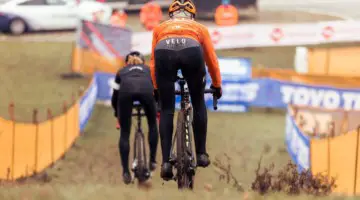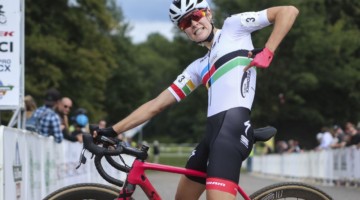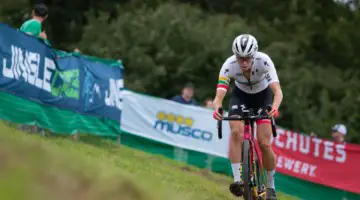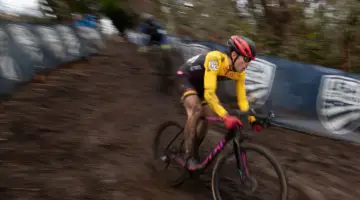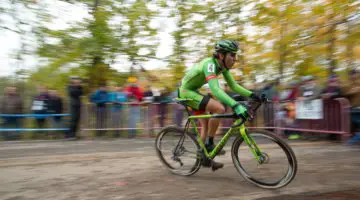If you’ve read any of Chris Mayhew’s articles on this site recently, you’re familiar with what he brings to the table. He’s a father, coach with JBV Coaching, racer and a friend to many in the Mid-Atlantic and beyond. I’m lucky enough to have had Chris as a coach. He’s a top-notch teacher and a wonderful source of advice, eager to help whenever he’s asked. I’m exploiting Chris’ kindness for the rest of you in a rapid-fire question-and-answer session on a wide array of training topics for this week’s Training Tuesday.
by Neil Schirmer
Neil Schirmer: What is the single most important gear-related habit you have?
Chris Mayhew: Take care of your gear and it will take care of you. Cyclocross is so hard on equipment. Chains, cables, cleats. They all wear fast. Keeping an eye on that stuff and replacing it before it becomes a problem is critical. I think the best habit would be to wash your bike, and maybe shoes, every Monday. It’s not so much about having a clean bike as it is inspecting everything visually while you clean it to make sure things are in good working order, and being in the habit of carving out a day and time to devote to bike care on a day when you’re probably not riding. Buy a good wash kit and you’ll be faster for it.
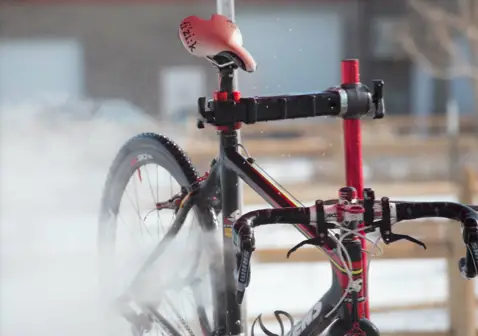
Clean bikes are happy bikes. And regular washing gives riders a chance to inspect bikes for issues before they become problems. © Dan Cavallari
NS: What is the most important, or several most important, non-bike habits you have that you attribute to gains racing cyclocross?
CM: Paying attention is a big one. By that I mean make notes of what pressure you ran on a course, what the conditions were like, how was the mud, that sort of thing. Typically, you race the same places and you can get a good feel for how things are going to play out at a venue from year to year. Don’t reinvent the wheel every time you show up to the same race in terms of clothing, tire pressure or selection or other similar matters.
Self-care is a huge one too. Cyclocross is hard on the body and figuring out how to deal with that is critical, especially over age 30. Your back will start to give out at some point and you need some tools to address that.
NS: Name the drill that you think would benefit riders the most if they incorporated it into their skills training routines.
CM: I’d say two drills. One: dismount/carry/remount. I practice that every year. It takes some time to re-acquire that skill and get back to where you were, and it just puts you in the ‘cross mindset.
The other drill is cornering of some sort. Plant some flags or cones, rip some corners, but do it with some like-minded individuals who are going to push you to be better than you are. You can get good by yourself, but you’ll never be as good as you can be without someone pushing you to be better in a collegial, constructive atmosphere.
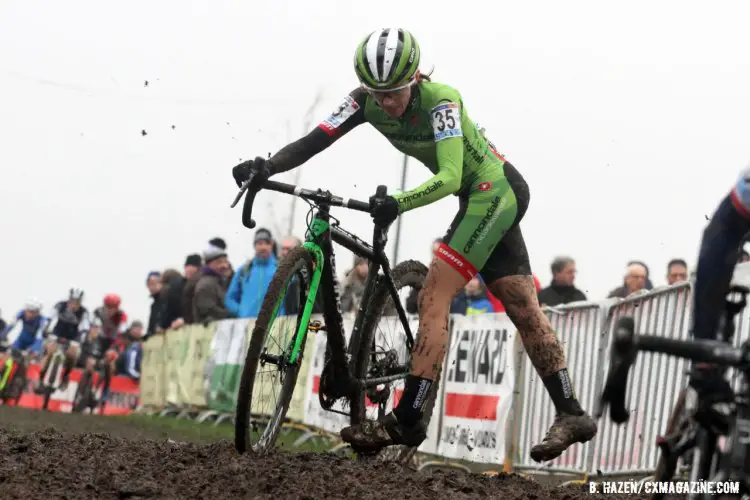
Practicing skills well in advance of the season ensures pulling them off in the big moment. File photo of Kaitie Antonneau dismounting at the 2016 World Cup Hoogerheide. © Bart Hazen
NS: What habits do you view as the most critical to race-day calm?
CM: Acknowledge race-day nerves as a positive thing. If you come to a race and aren’t amped up a bit, something is wrong. This is you being excited. Allow yourself to feel that without being overwhelmed. Also race-day preparation. Think ahead. Prior planning prevents poor performance. Do everything you can before you show up to make sure you can execute on race day. Packed bags, nothing left at home, food for the day, etc.
NS: What is your stock, go-to cool down routine that you recommend for folks racing both days in a weekend?
CM: After your race, I suggest about 20 minutes of very easy pedaling. After you cross the line, find your clothes, or at least grab a jersey so you can stuff a bottle in your pocket. Then roll out as easy as possible for 20 minutes. Often there are roads nearby you can do this on, but sometimes not, and you just have to roll around the parking lot.
The idea is, no pressure on the pedals, and consume your bottle by the end. Also, take that time to mentally decompress. By the time you get back, whatever emotions were riled up from the race should be set aside.
NS: What are two things you would recommend as mental preparation habits for optimal race-day performance? Positive self-talk on race morning? Visualization exercises of the perfect start? Taping key thoughts on your top tube as a reminder?
`
CM: Visualize. You’ve probably done this race before. Think about where it went right last time and walk yourself through that again. Walk yourself through the course’s turns. And compartmentalize on course during the race. That is, think about things, but not too much. Yes, maybe you bobbled that log. Acknowledge it, figure out what to do better next lap, then forget about it until the next lap. Don’t dwell on it or disrupt your sense of being in the moment.
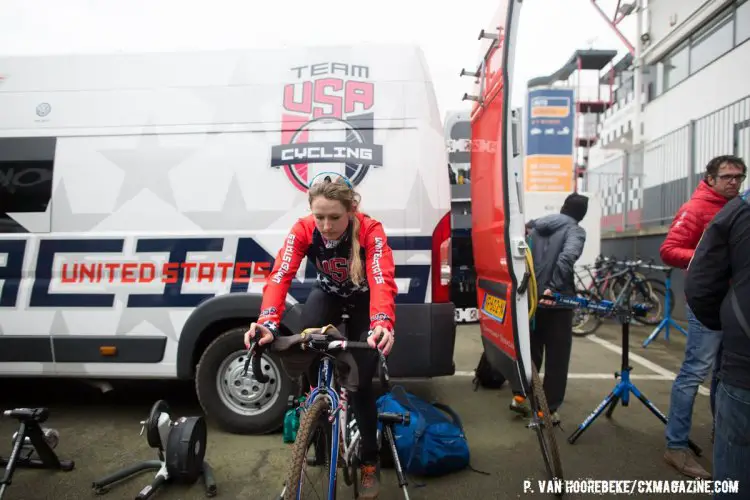
Visualize the race to come and the things you have to do to hit your goals. File photo of Ellen Noble on Course Inspection Day at the 2016 UCI Cyclocross World Championships. © P. Van Hoorebeke/Cyclocross Magazine
Cue words and phrases too. Breathe. Don’t be satisfied. Whatever it is that you can think to yourself that will bring you back into a state of flow and get you focused on the task at hand, do it. Tape some words to your stem if that helps.
NS: Other than yoga, what non-riding exercise habits would benefit your athletes most. Box jumps? Planks? Other core work? Running, or other cross-training?
CM: Right now I’m really big on foam rollers and ball rolling. It’s a nice piece of self-care that lets you execute better when you need to. We all have the one muscle that’s tight or needs some work. Twenty minutes a day, while you watch a, Behind the Barriers episode is perfect for that, and doesn’t require anything more than a foam roller and some floor space.























